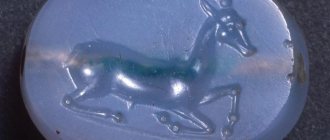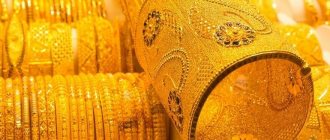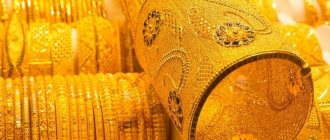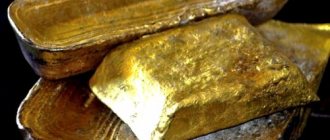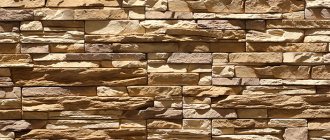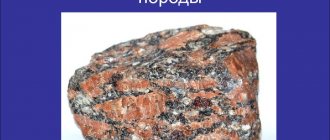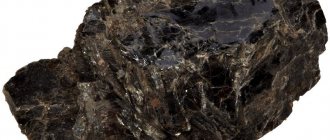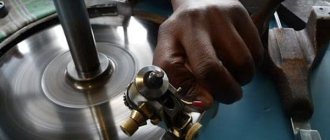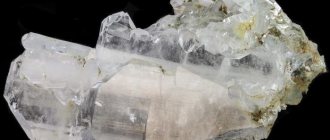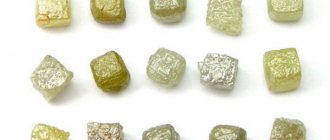So what is alabaster?
This is really a “subspecies” of gypsum. Like building gypsum, it is obtained from a natural mineral - gypsum stone, both of them are calcium sulfate, only the first is dihydrate (CaSO4•2H2O), and alabaster is semi-hydrous (CaSO4•0.5H2O) .
The mineral is crushed and then fired at a temperature of about 180C.
The grind of alabaster is finer than that of building gypsum, and therefore this material has less ductility, but greater hardness.
Also, its unique feature is the drying time - alabaster mortar sets on average in 5 minutes, that is, much faster than other building mixtures.
These properties narrow the range of applications of alabaster to construction and finishing works, while gypsum can be used in many industries, including medicine, jewelry, casting, art, etc.
Rules for applying the material
Since alabaster dries quickly, you should practice beforehand to ensure certain dexterity. Working with a wide spatula will help ensure faster coverage of the wall. In turn, the composition is applied to it with a narrower spatula. The consistency of the composition in most cases resembles thick sour cream - this is how it is best applied.
In general, work carried out with alabaster, as with gypsum, is carried out from the bottom up, and there are no special differences here. However, as experienced people say, it is necessary to rinse the instrument after this composition as quickly as possible, since after hardening it will be almost impossible to do this.
Characteristics and types of alabaster
The main average characteristics of alabaster are presented in the table below:
| Compressive strength | 4.0 MPa |
| Flexural strength | 2.0 MPa |
| Binder grade | G5 - G6 for building mixtures, as well as for the production of plasterboard, gypsum particle boards and gypsum boards G13-G25 for the production of high-strength elements |
| Water consumption (in terms of 1 kg of dry mixture, according to snip) | 0.65-0.70 liters |
| Setting time | 5-30 minutes from start to finish |
| Fire resistance | heating up to 700° without destruction |
| Color | White, pearl gray, yellowish, light green, light pink (the color depends on the characteristics of the deposit and, according to experts, does not affect the strength qualities of the finished surface) |
Since one of the main features of the mixture is the rapid development of strength, three types of alabaster are distinguished according to the speed of hardening:
| View | Index | Start of setting, min. | End of setting, min. |
| Fast-hardening | A | 2 | 15 |
| Normal hardening | B | 6 | 30 |
| Slow-hardening | IN | 20 | No standard |
Place of Birth
Sedimentary origin ensured the widespread occurrence of the rock on the planet:
- Russian deposits are concentrated in the North Caucasus, in the vicinity of the Urals, Krasnodar Territory, Tatarstan, and Dagestan.
- The largest suppliers of raw materials to the world market are the USA, Canada, Spain, Iran, and Turkey.
Some mines are unique. For example, in Oklahoma. This US state has an array of natural gypsum formations - the Alabaster Caves park with raw materials of white, pink and rare black color. However, they extract it there in crumbs.
Benefits of alabaster
- Fast and smooth!
Thanks to the speed of setting, the surface can be leveled literally in minutes, and after an hour, and even then if taken with a reserve, it is already ready for further processing. - Alabaster solution has high adhesion and fits perfectly
on almost any prepared surface - When frozen, alabaster has good strength characteristics
and. To this day, elements of palaces and temples that are more than 5 thousand years old have been preserved, and they are in excellent condition. When dry, the material does not shrink and is resistant to cracking - Hardened alabaster absorbs noise
, so it can be used as an auxiliary material for sound insulation.
6 hours of exposure to open fire
- this is how much alabaster can withstand without significant deformation. It does not burn itself and prevents the spread of flame. - The material contains no chemical additives
, it is environmentally friendly and can be safely used in bedrooms, children's rooms, etc. - Affordable
price compared to similar dry construction mixtures.
Varieties of mineral
Depending on the structure, density, and other characteristics, several types of gypsum are distinguished:
- Alabaster. The whitest mineral of high purity. Among the Greeks, the term αλαβαστρος meant “white.” Formed when gypsum is heated to 142°C.
- Selenite. A colorless variety of fibrous structure with a silky sheen. Found a century and a half ago in the Urals. Named due to the radiance that seems to emanate from within the stone. Based on this characteristic, it can be easily distinguished from other types of gypsum.
In Russia it is known as “Maryino glass”. The history of the name is connected with the tradition of covering the faces of saints, especially the Mother of God (Virgin Mary), with transparent selenite plates.
- Desert Rose. Plaster plates of pastel shades, assembled in the shape of a rosebud. Found in the deserts of Africa.
- Crystal. Not a particularly durable mineral with grayish tints. Goes for souvenirs.
- Anhydride. Dehydrated gypsum in the form of crystals (sometimes very large). Looks like marble. It is easy to distinguish the origin by placing the sample in a humid microclimate. The plaster will gradually swell and become deformed.
Mineral Anhydride
There is a classification of the mineral according to the speed of setting (fast-, medium-, slow-hardening gypsum).
Application of alabaster
Due to the characteristics of the material, the range of applications of alabaster in construction is wide: it is relevant for the production of drywall, in demand by professional builders, and is also often used by private owners for minor repairs.
- Correction of cosmetic defects in walls
, ceilings and plasterboard/gypsum board surfaces. Alabaster mixture is traditionally used to repair various chips, dents, cracks, etc. - Preparing surfaces for finishing
The alabaster mixture is excellent for puttingtying walls and partitions in rooms with normal humidity; it is used to prepare surfaces for all types of wallpaper, as well as decorative plaster. Some builders even use alabaster in bathrooms, under tiles, but in this case it is necessary that the material is completely hidden by the cladding and not in contact with water. This principle is also true for the kitchen, since alabaster absorbs moisture vapor. - Electrical installation work
Alabaster is an electrician's delight, a convenient material that allows you to quickly fix the cable in the wall without the risk of it moving while the mixture dries. In addition, many people use it when installing socket boxes, because... even if the plug is roughly pulled out of the socket, the structure, thanks to the hardness of alabaster, is guaranteed to remain in the wall, which sometimes more expensive and modern dry mixes cannot provide. - Interior design
. When decorating rooms with stucco, a specific problem often arises: cast gypsum elements have considerable weight and therefore must be firmly fixed to the base. This is especially true for ceilings. And alabaster in this case is an ideal option. It will also come to the rescue for masking and repairing small flaws in stucco molding and is indispensable for restoration work.
Where is it used?
The scope of application of gypsum is limitless. Each uses the right type of raw material.
Application areas
This is an inexpensive, practical material for cement, slabs, blocks, cornices. Suitable for interior or exterior.
Alabaster is important as a raw material in the production of special grades of paper, enamels, paints, glazes, and medical compositions.
The substandard material is ground and turned into a soil desalinizer.
Aesthetics
Sculptors cannot work without plaster blanks.
Master stone carvers turn stone into small plastic pieces, vases, and boxes.
Colorless transparent selenites are especially in demand. Stone cutters transform mysteriously shimmering pebbles into small plastic pieces, an esoteric assortment: pyramids, balls, pendulums.
Selenite bracelet
Jewelers create cabochons.
However, the fragility of the mineral limits the range. These are mainly pendants, pendants, brooches - things that do not risk quickly wearing out or crumbling.
Collecting
You can collect the “gypsum section” of a mineralogical collection for years, the manifestations and forms of the mineral are so diverse.
Connoisseurs are especially interested in “desert rose”, “Maryino glass”, black and pink stones from America, “dovetail”, samples with the cat’s eye effect.
Maryino glass
Preparing for work
When working with alabaster, half of the success depends on the quality of preparation, namely, on the selection of containers and tools. To make the process easier, consider the following principles.
- No metal containers right away
! Alabaster will stick tightly to the iron walls, which means loss of material, inconvenience and damaged container. Plastic dishes are better suited, but the most comfortable option is still rubber: the solution does not stick to the springy walls, and after finishing the work, the dried residues can be easily shaken out; to do this, just squeeze the mold several times and then turn it over. In addition, if desired, you can purchase special buckets for working with plaster in hardware stores. - There is no container with the remaining solution right away
! The dried solution accelerates the hardening of the new batch being mixed. - As for the spatula, modern tools made of plastic or rubber
; the mixture does not stick to them. But a classic steel spatula is also quite suitable, preferably a new one: according to the observations of some craftsmen, rust accelerates the setting of the already fast-hardening solution
For small volumes of mixture
It is convenient to seal small portions of alabaster in nylon buckets or compact rubber containers
. Often builders use halves of ordinary children's balls of suitable diameter.
A spatula is optimal for stirring “small doses” of the alabaster mixture.
For large volumes
Plastic or rubber bucket
line with a single piece of cellophane, dense and without holes, pin the “tails” to the edges of the container so that the polyethylene does not move during stirring; After use, the film is simply removed from the bucket and thrown away.
It is convenient to stir the solution with a construction mixer, or, if it is not available, with a drill with an attachment.
How to care
Plaster is strong, but vulnerable, so you need to care for it carefully:
- Avoid falls, impacts, and mechanical impact.
- Protect stones from the harsh sun (especially alabaster, which quickly turns yellow and fades).
- Do not place products in rooms with consistently high humidity (bathtub, swimming pool, open veranda, greenhouse).
A humid microclimate is detrimental to gypsum: the mineral becomes saturated with water, losing its shape and decorativeness.
Contaminants are removed from the stone with a dry or slightly damp cloth.
It is useful to recharge the selenite variety of the mineral with the light of the Moon by placing it on the windowsill at night.
Mixing and working with the solution
Here it is important to answer three questions: in what proportion to mix, how exactly to mix and what nuances should be taken into account when mixing?
Actually, the proportions depend on the purposes for which the solution is planned to be used. SNiP recommends the following ratios:
| Amount of dry mixture | Amount of water | |
| For mixing alabaster plaster and putty mortar | 1 kg | 0.65 l. |
| For installation and repair mortar | 1 kg | 0.5 l. |
| For liquid putty mortar | 1 kg | 1 l. |
In order not to ruin the material and get a high-quality solution, strictly adhere to the technology
.
- Remember that the mixture is added to water, but in no case vice versa
! - The powder should be poured gradually
, like flour into pancake dough, and
mixed thoroughly
until the mass is homogeneous. - The correct putty solution has the consistency of mousse or yogurt.
- If the solution begins to harden and you haven’t had time to use it up
or do what you planned,
just throw it away
without trying to “reanimate” it by adding water. With alabaster, the principle “it died like that” is 200% correct; the set solution is no longer suitable for anything. - When applying the solution, keep in mind that when it dries, the material increases slightly in volume.
Tips from the experts:
- Theory and SNiPs
- this, of course, is good, but in practice, alas, the dry mixture can behave differently, it all depends on the brand and even the batch. Therefore, before closing the entire required volume, conduct a test with 100 grams of material.
- For shuttering use cold water
.
- When mixing the solution, it is certainly worth strive for uniformity
. However, overdoing it is also fraught: there is an opinion that mixing too long and thoroughly, especially with a mixer, disrupts the structure of alabaster, as a result of which it loses strength.
Molar mass of gypsum
Gypsum is a typical sedimentary mineral. It is a white or gray material with a glassy sheen. If there are impurities in the gypsum, then it acquires a yellowish, pinkish, or brown color. The density of the substance is 2.3 g/cm³.
Molar mass (M) is the mass of one mole of a substance. It can be found using the ratio of the mass of a substance to the amount of substance:
M = m/n, where
- m is the mass of the substance,
- n – amount of substance.
Molar mass can be found using the periodic system of Dmitry Ivanovich Mendeleev. Molar mass is the sum of the atomic masses of each chemical element. It is measured in g/mol.
M (CaSO4•2H2O) = 40 + 32 + 16 * 4 + 2(1 * 2 + 16) = 172 g/mol
Magic properties
The magical effect of gypsum is ambiguous:
- The stone calms the boiling of passions. A figurine or mineralogical specimen is suitable for hot-tempered, nervous people as a sedative.
The magic of gypsum attracts prosperity, love, money to the owner.
- The crystalline variety of the mineral neutralizes the negative effects of gadgets. It is recommended to place a product made from it near the computer screen.
- The mineral does not suppress a person’s will, but it is not needed by suggestible, insecure people: under its influence, these qualities will intensify.
- The stone is capable of destroying the Napoleonic plans of proud, vain, stubborn, aggressive people.
It is advised to place it in the bedroom so that the marriage remains strong.
Therapeutic effect
The healing properties of gypsum are recognized by lithotherapists and official medicine.
Medical science uses the mineral in the following areas:
- Treatment of broken bones or sprained ligaments.
- Regulation of sweating.
- Cleansing the skin and body in general. There is no mysticism - this is the merit of calcium and sulfur in the composition of the mineral. They are the ones who draw out toxins, impurities, and clean pores.
Lithotherapists recommend the mineral to patients with spinal tuberculosis and osteomyelitis. The pebble is applied to any sore spot.
For a physically healthy person, the mineral is suitable as a sedative. Contemplating a ball or stone for a few minutes a day calms you down, helps you concentrate, and overcome apathy, depression, and anger.
